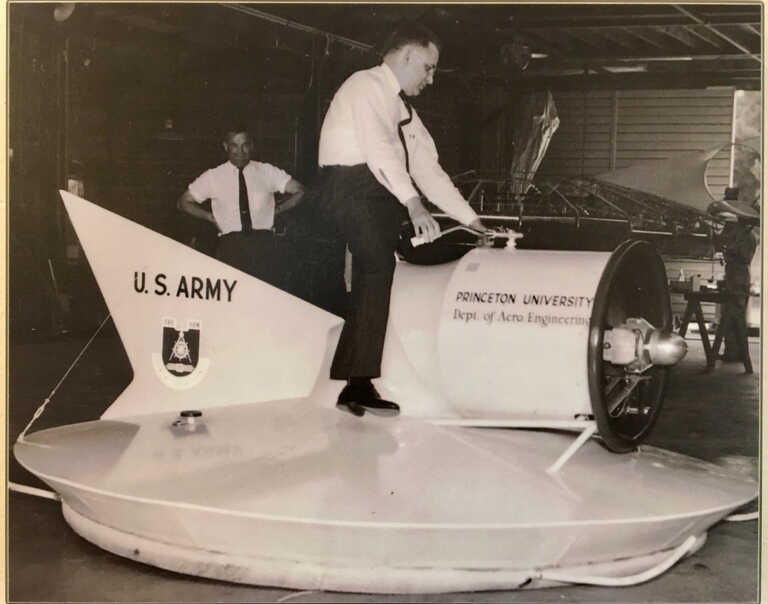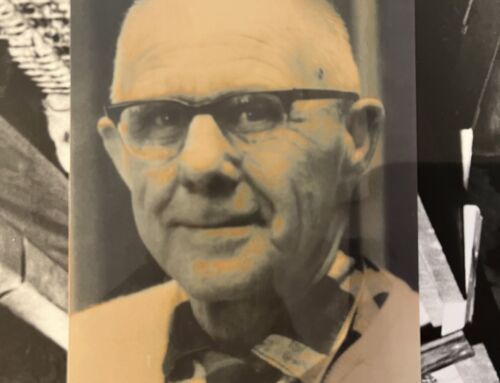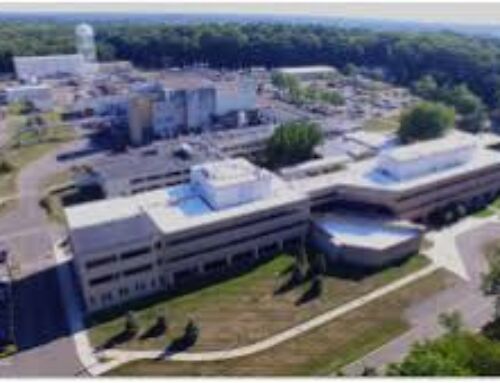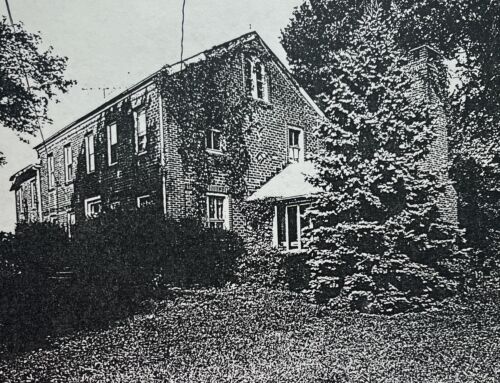During the late 1950s, a worldwide burst of energy poured forth in experimental Ground Effect Machines (GEMs) and Surface Effects Ships (SES). The Aeronautical Engineering Department of the James Forrestal Research Center at Princeton University produced several GEMs, two of which were supported by the U.S. Army’s Transportation Research Command.
The initial “flying” vehicle was the X‑2 Air Scooter seen here. A nose fan supplied air to the air cushion contained within the peripheral fabric curtain around the 8 foot diameter platform. The X‑2 was followed by the X-3 and X‑4 variants. All of these GEMs were light, one‑man vehicles. Only the X‑2 and X‑3 were evaluated by the U.S. Army.
The machines were only instruments to study the phenomenon that makes it possible: ground effect. Air is pulled into the machine and blasted out the bottom against the ground to create a supporting cushion of air.
In 1992 the Plainsboro Historical Society attempted to acquire this hovercraft prototype. However, the Historical Society was not able to procure the hovercraft, and its whereabouts are unknown.
Photograph (reproduction) – circa 1960








